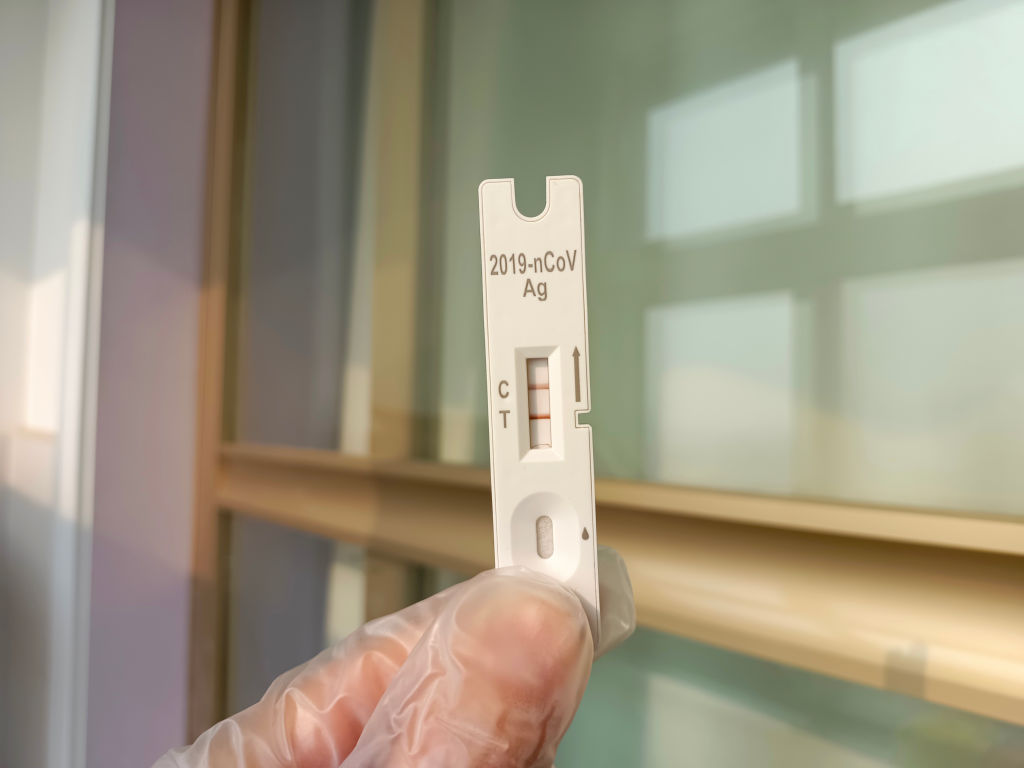---------------------------------------

COVID-19 cases are once again on the rise in the U.S., with data from the U.S. Centers for Disease Control and Prevention (CDC) showing virus-related hospital admissions, positive test rates, and wastewater indicators trending upward.
The virus has ebbed and flowed repeatedly since 2020—but this time is unique, since it’s the first notable uptick in spread since the COVID-19 public health emergency (PHE) officially ended in May, bringing to a close a variety of pandemic-era policies and programs.
[time-brightcove not-tgx=”true”]
While much of the advice around COVID-19 stays the same, the post-PHE landscape does look a bit different. Here’s what to do if you think or know you have COVID-19.
Get tested
As always, the first step is confirming whether you actually have COVID-19—but now, you might have to pay for your test.
Without the PHE in place, many insurance plans have stopped covering the costs of at-home tests, which means you may have to pay the retail cost of around $10 per rapid test if you want to diagnose yourself. PCR tests performed in a pharmacy, doctor’s office, or health clinic may also come with some fees depending on the details of your insurance plan and where you go for testing.
This database lists clinics that still offer free testing for people without insurance. Some community groups also continue to distribute free at-home tests. And hold onto any tests you’ve stockpiled, as many are valid beyond their printed expiration dates. You can check the status of your tests here.
If you test positive, stay home and notify your contacts
If you test positive, you should tell everyone you’ve recently been around, the CDC says. It’s possible you were infectious before you developed symptoms or got tested.
Even though the PHE has ended, CDC guidance still says anyone with COVID-19 should isolate themselves from others—including people in their households—for at least five full days. The CDC considers your first full day of isolation to be the day after you began feeling sick or, if you’re asymptomatic, the day after you got tested.
Once those five days of isolation are up, the CDC recommends wearing a high-quality mask, such as an N95 or KN95, anytime you must be around people for an additional five days, as you may still be contagious. It’s only okay to remove the mask early if you test negative on two separate at-home tests, taken 48 hours apart, the agency says.
Consider treatment
The antiviral drug Paxlovid is now U.S. Food and Drug Administration-approved to treat COVID-19 in adults at risk of developing severe disease because of age, underlying health conditions, or other risk factors. Studies so far have shown limited benefits for people who do not have risk factors for serious disease.
Read more: Getting COVID-19 Multiple Times Is Risky for Your Health
If you test positive for COVID-19, your doctor—or a clinician at a pharmacy or health clinic participating in the national Test-to-Treat program—can help determine if you should take Paxlovid or another COVID-19 treatment, such as the lesser-used oral antiviral Lagevrio. It’s best to consult a clinician as soon as possible, as both Paxlovid and Lagevrio must be taken within five days of symptoms starting. At least for now, both drugs are still available for free, although some people might have to pay administrative fees associated with their prescriptions.
While you’re sick, the CDC also recommends drinking plenty of fluids and using over-the-counter anti-fever medications if necessary. If you start to experience severe symptoms, like difficulty breathing or chest pain, seek medical care immediately.
If you’re worried about Long COVID
For now, the only guaranteed way to avoid Long COVID is not to get COVID-19. But researchers are learning more about what may prevent long-term complications in people who get infected—as well as traits that may put people at risk, such as being unvaccinated and having previous infections.
There is some preliminary evidence that taking antiviral medications, including Paxlovid, when you’re sick with COVID-19 may help reduce the risk for Long COVID later on, although that theory has not been concretely proven. In previous interviews with TIME, experts said the chance of preventing Long COVID is another reason that high-risk individuals should take Paxlovid, but there isn’t yet enough data to recommend the drug to lower-risk people who wouldn’t otherwise be eligible.
Whether you take medication or not, get as much rest as possible when you have COVID-19, as some anecdotal evidence suggests doing so can help prevent Long COVID. Some experts recommend avoiding intense exercise for at least a couple weeks after testing positive.
And if you’re worried about developing Long COVID, you may want to get a PCR test to confirm your COVID-19 diagnosis. Having that record may make it easier to get the right care in the future, if necessary.
-----------------------------------------
By: Jamie Ducharme
Title: What to Do If You Catch COVID-19 This Summer
Sourced From: time.com/6301538/what-to-do-if-you-catch-covid-19-in-2023/
Published Date: Fri, 04 Aug 2023 16:05:24 +0000
Read More
 General Health and WellnessFitness and ExerciseSupplements and VitaminsPandemic NewsVideosPrivacy PolicyTerms And Conditions
General Health and WellnessFitness and ExerciseSupplements and VitaminsPandemic NewsVideosPrivacy PolicyTerms And Conditions
